By Deborah Lebow Aal, with assistance from Nevin Bebee and Diane Stahl
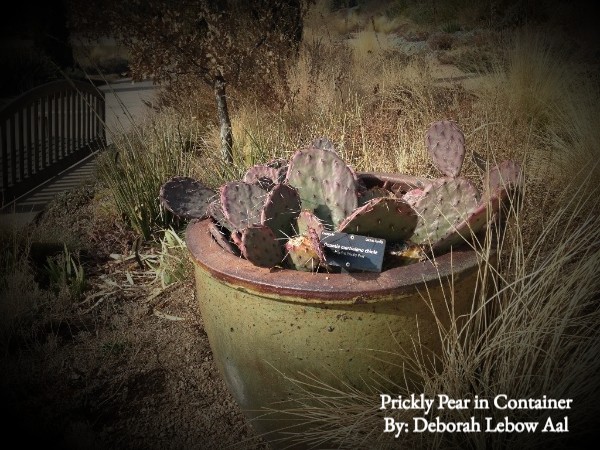
As we’ve mentioned in our Native Plant Landscaping Statement, we recognize that many people don’t have access to a yard but perhaps have a porch or terrace, and would like to do something for the environment, the food web, and wildlife, i.e., plant natives in containers. Native plants provide food for birds, bees, butterflies, and other wildlife that non-natives don’t, and require fewer external inputs (water and fertilizers), so are therefore more sustainable. Even people who have access to yards may want to have containers that are not just beautiful but have ecosystem benefits.
I am not going to give you a basic tutorial on container gardening in Colorado except to offer two pointers. First, plants in containers usually require much more water than plants in the ground. This is where natives shine, as natives typically do not need much water (but note, all plants require some water! You can’t plant anything in a container and then just ignore it). Second, a “true” designer will tell you that containers require a “thriller, a spiller, and a filler.” To have a beautifully designed container, you usually need a focal point plant (the thriller), a plant that spills over the sides (the spiller), and a filler (no explanation needed). But, with native plants, that’s not always easy, and you may have to “shift” what you think is appropriate for a container. Many of the native plants we will be recommending can grow to be very large and can “carry” a container on their own, so you may not need a thriller, spiller and filler. In addition, native perennials often don’t have the visual impact you are used to in a container, immediately, but over time will reward you with natural beauty and perhaps butterflies and hummingbirds.
And, another note on natives in containers. (I know, I know, I said this would not be a tutorial on the fundamentals of container gardening, but this is important…) Most natives that we are highlighting are perennials, meaning they are plants that survive several to many years (as opposed to annuals which flower and die within one year). Perennials typically have a shorter bloom time than annuals. So, make sure you like the foliage of the plant you will have in your container, because that’s what you will be seeing most of the time. The bloom is the “bonus.” Or, pair the native with an annual “spiller,” if you want a more traditional container look and additional bloom time in your container. Just make sure that the non-native plants you choose have the same water and sun requirements as your natives.
When you plant in containers, the container you pick is very important. A terra cotta pot can look more natural, but will deteriorate more rapidly in freezing temperatures. Another note on containers is that their size should visually balance the plant well. Many of these natives get very large. We recommend pots be at least 20 inches in diameter with at least 15 inches soil depth.
Prickly Pear (Opuntia macrorhiza)

Prickly Pear is a fabulous choice for containers. Depending on the variety, it will have a lovely yellow or apricot flower in the spring, and edible purple pads in the summer. Prickly Pear can over-winter in a container in Colorado with little to no maintenance. On your next visit to Denver Botanic Gardens, you can see many containers full of prickly pear in the Water Smart garden, as well as scattered around the gardens. And even for those of you with access to a yard, growing prickly pear in containers is a great way to have this lovely plant in your garden while keeping the prickly cacti needles out of your way, hopefully.
Soapweed yucca (Yucca glauca)
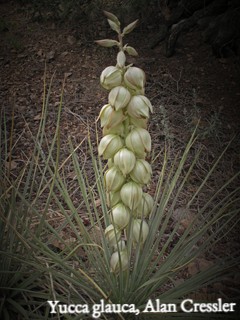
Yucca glauca is a striking, architecturally-beautiful native shrub with fragrant off-white flowers in the summer. An added bonus is that this plant does well in light shade and is evergreen, so it will give you its blue/green foliage color year round. The disadvantage is that this plant will need a very large container, as it can reach up to 5 feet.
Sunset hyssop (Agastache rupestris)
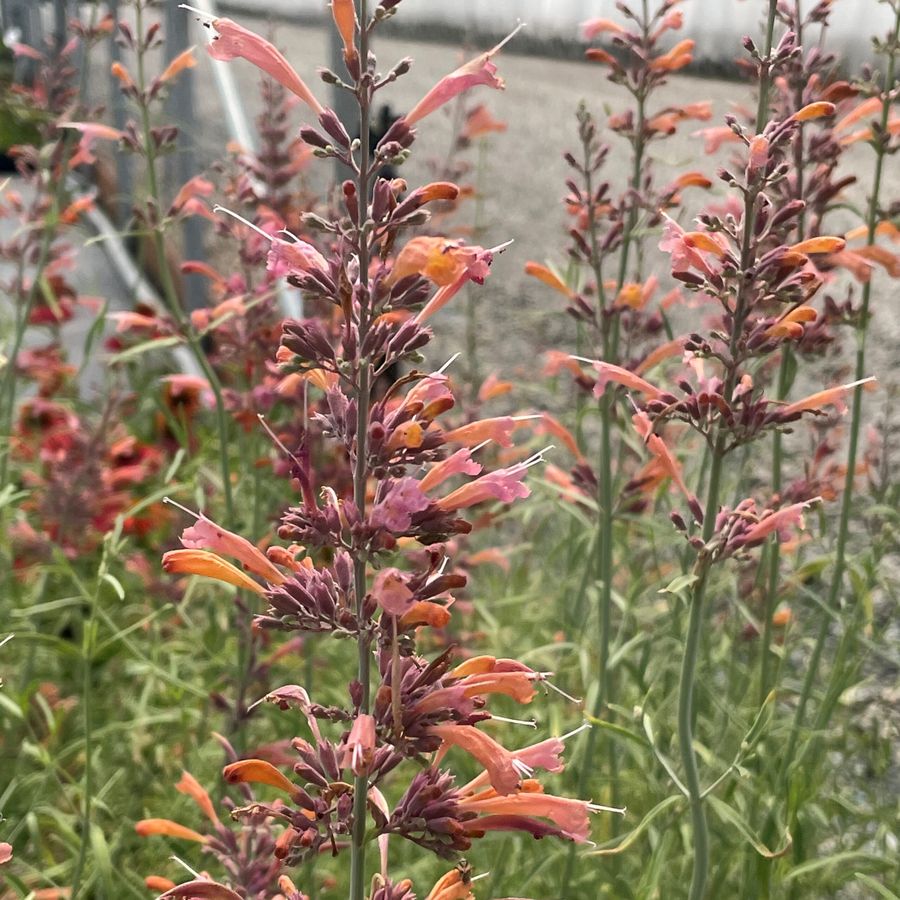
This lovely plant has a long summer bloom, with orange and pink flowers that smell like anise. It attracts butterflies and hummingbirds and has a silvery green foliage color. It also gets very tall – up to 4 feet tall, so it needs a large pot as well. One of my all-time favorite plants, I have it scattered all over my garden for its bloom, attractiveness to pollinators and it’s heavenly smell. This plant does best in full sun.
Little bluestem (Schizachyrium scoparium)
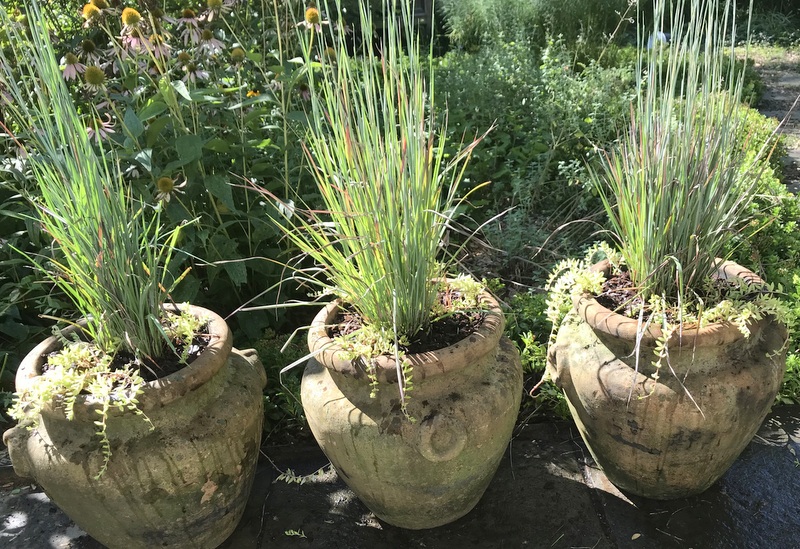
This is a grass that will give you lovely color all year round. It stays blue/grey in the spring and summer, and then turns purple/bronze for the fall/winter. It’s a great plant for the middle of your container (the thriller?). It also does best in full sun, and can grow up to 3 feet tall. This is a gorgeous grass that, in my opinion, rivals colorful flowers for visual interest in a pot.
Small-leaf pussytoes (Antennaria parvifolia)
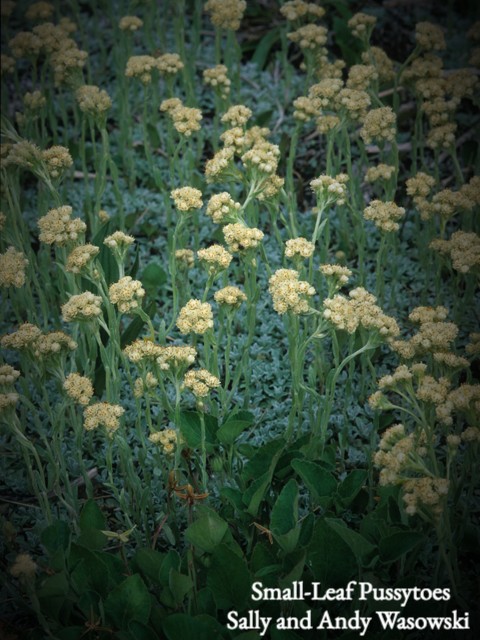
This low-growing plant has cream- colored (or pink) flowers in the spring. The foliage stays green all year round and is a good “filler.” It gets 2-4 inches tall.
Below are a few more that I don’t personally have experience with in pots, but others have highly recommended:
Blonde ambition blue gramma grass (Bouteloua gracilis)

Grasses offer year-round interest in pots and this one can effectively be set behind shorter flowering plants. It gets 2 ½ to 3 feet tall, with exceptional winter interest. It has really unusual eye-lash like chartreuse flowers in mid-summer.
Yellow sundrops (Calyophus serrulatus)

A long-blooming plant covered in bright yellow flowers from May through September. It pairs well with lavender valley verbena (which I do not think is a native). It gets 6-8 inches tall and 12-18 inches wide. No real winter interest.
Missouri evening primrose (Oenothera macrocarpa)
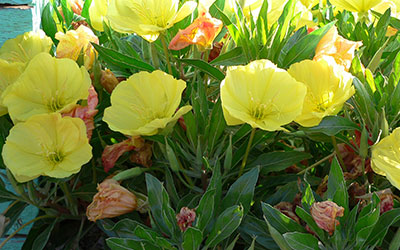
This near-native may be considered a ground cover, as it is only 4-8 inches tall, 16-24 inches wide. It is a long-blooming plant, blooming from May through September, with very attractive silver foliage when not blooming. It pairs well with desert beardtongue (below).
Desert beardtongue (Penstemon pseudospectabilis)
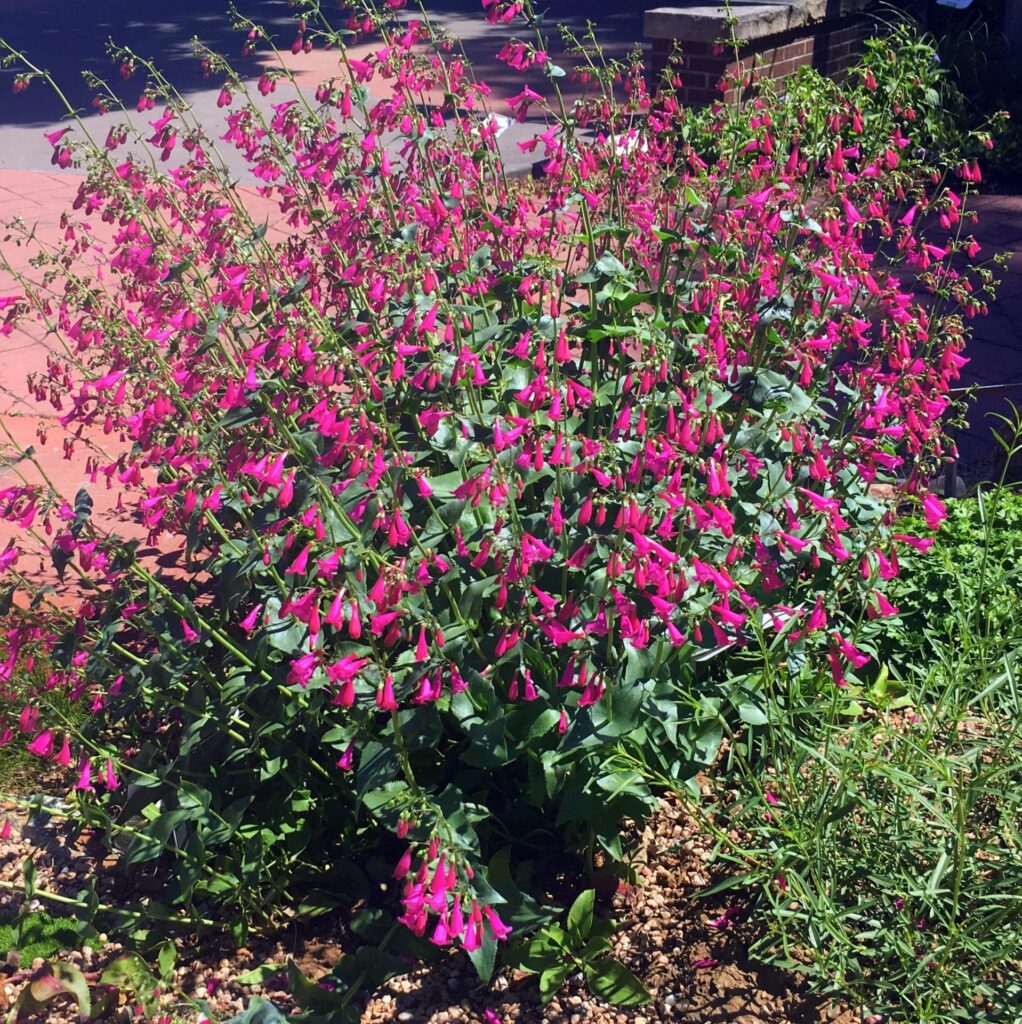
A tall near-native (AZ, CA, NM, UT) that blooms from May through July with a gorgeous deep pink flower. Note that there are many Colorado native penstemons that would do well in containers. This one does well in hot dry areas, and can tolerate very poor soil (as do many natives). It grows up to 36 inches tall, and 18 inches wide.
This is article one on this subject. We are hoping to hear from some of you to let us know of other Colorado native plants that do well in a container for article 2. Please email us with your thoughts!!!
Curious to learn more about transforming your garden into a habitat with Colorado native wildflowers, grasses, shrubs, and trees? Check out our native gardening toolkit, register for an upcoming event, subscribe to our newsletter, and/or become a member – if you’re not one already!
